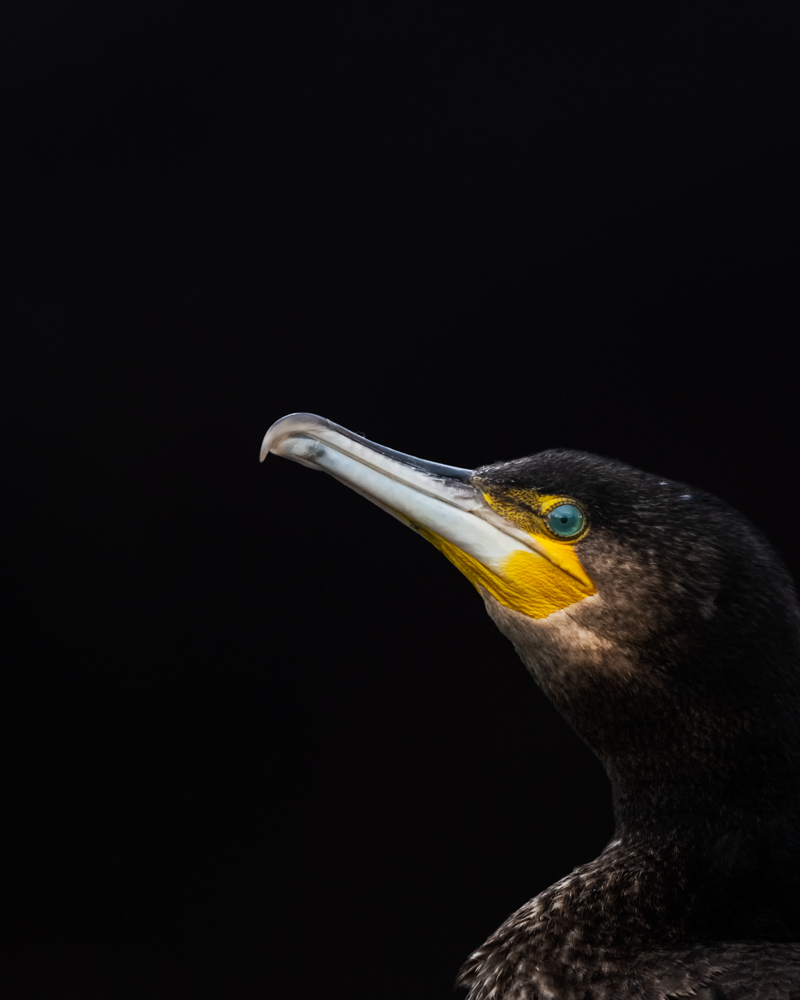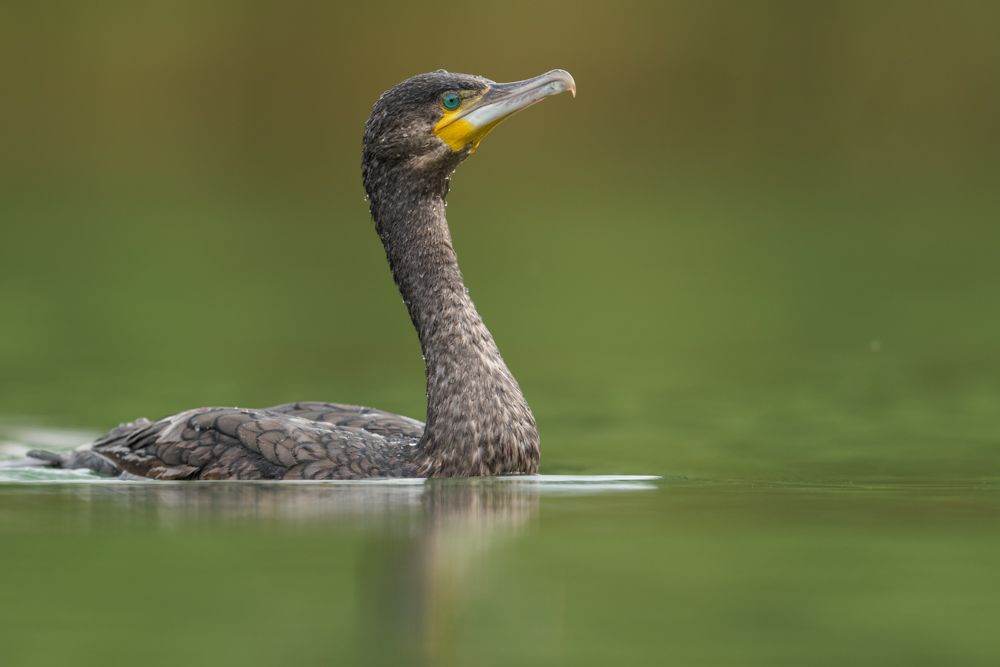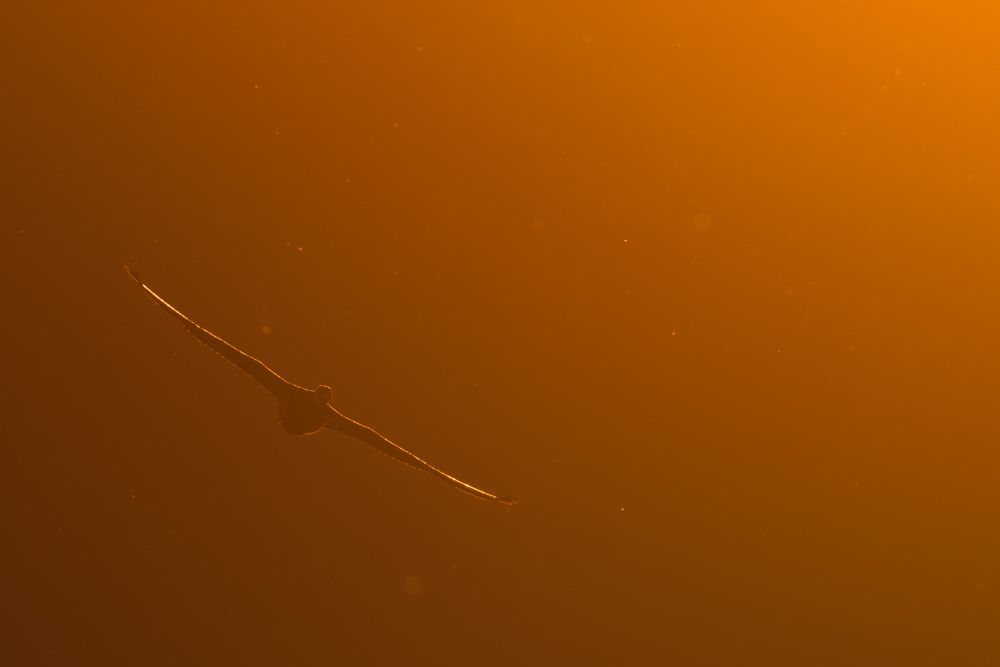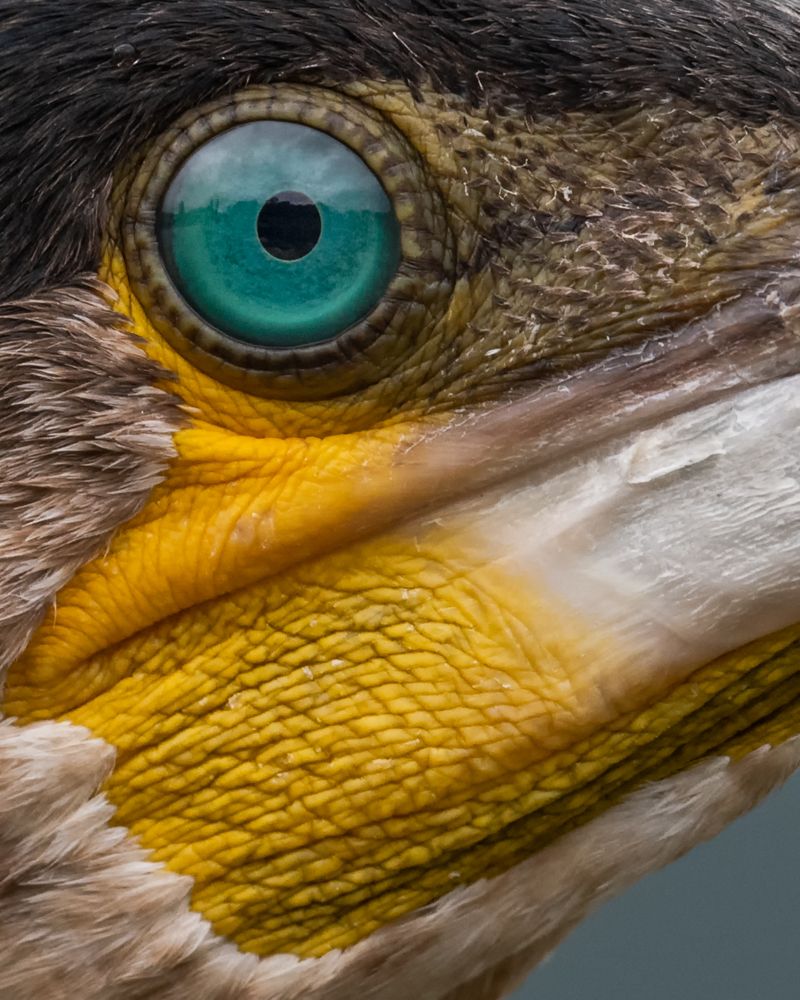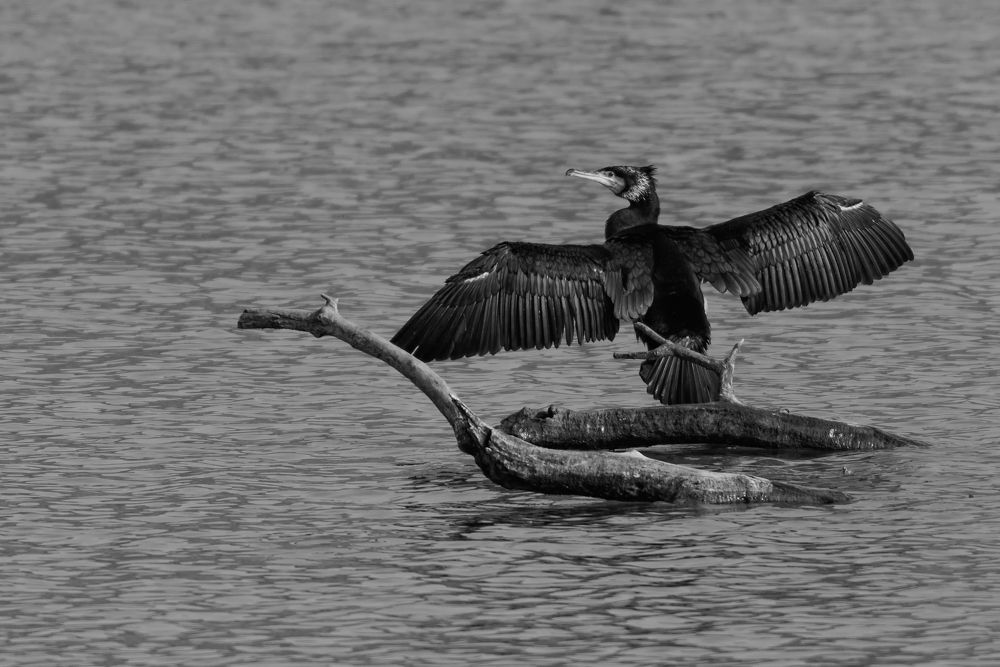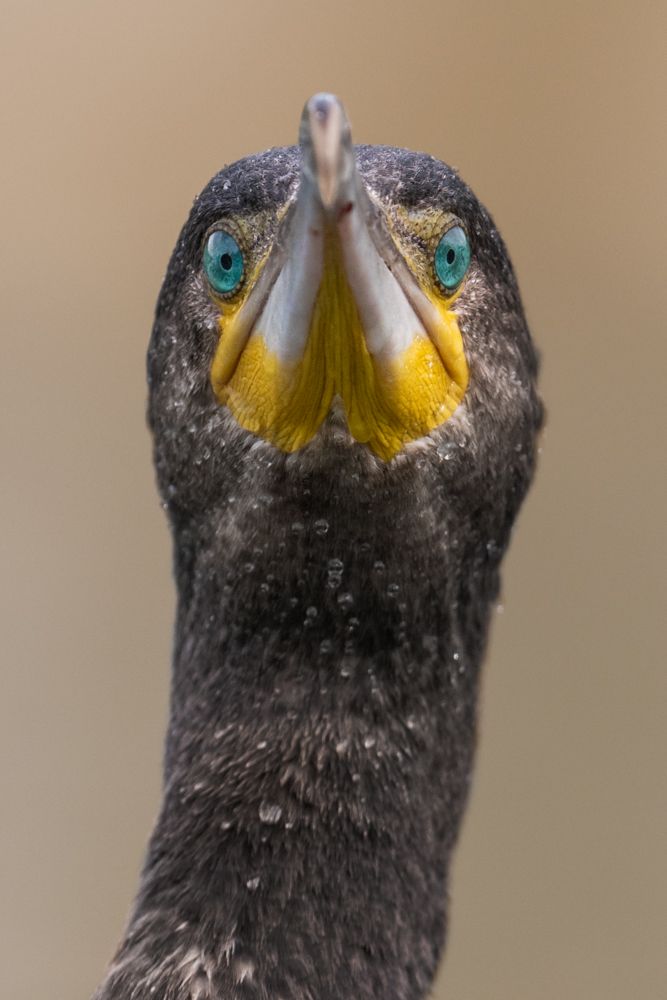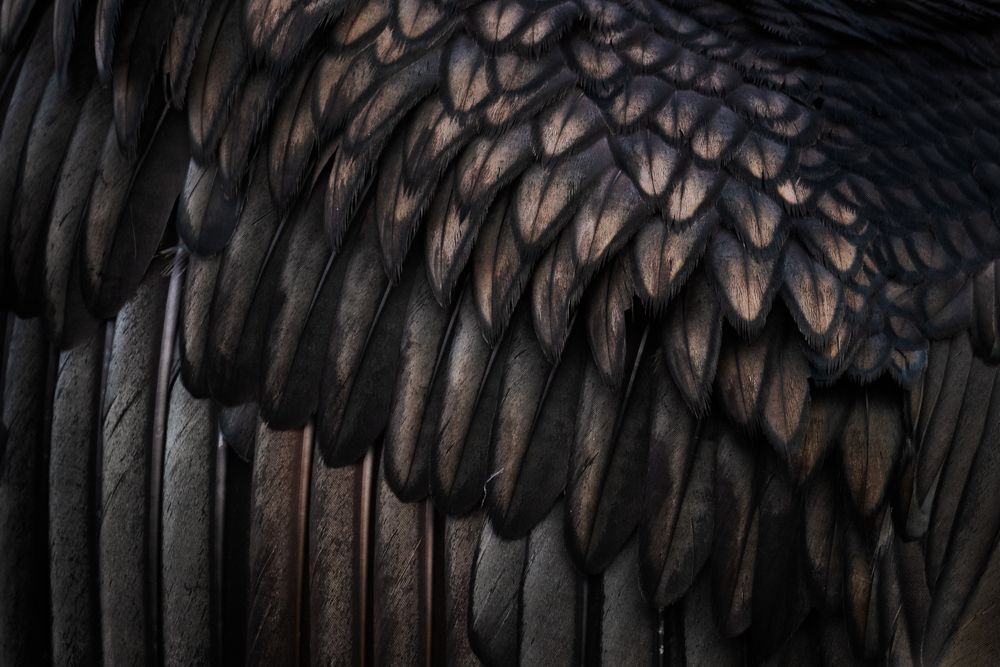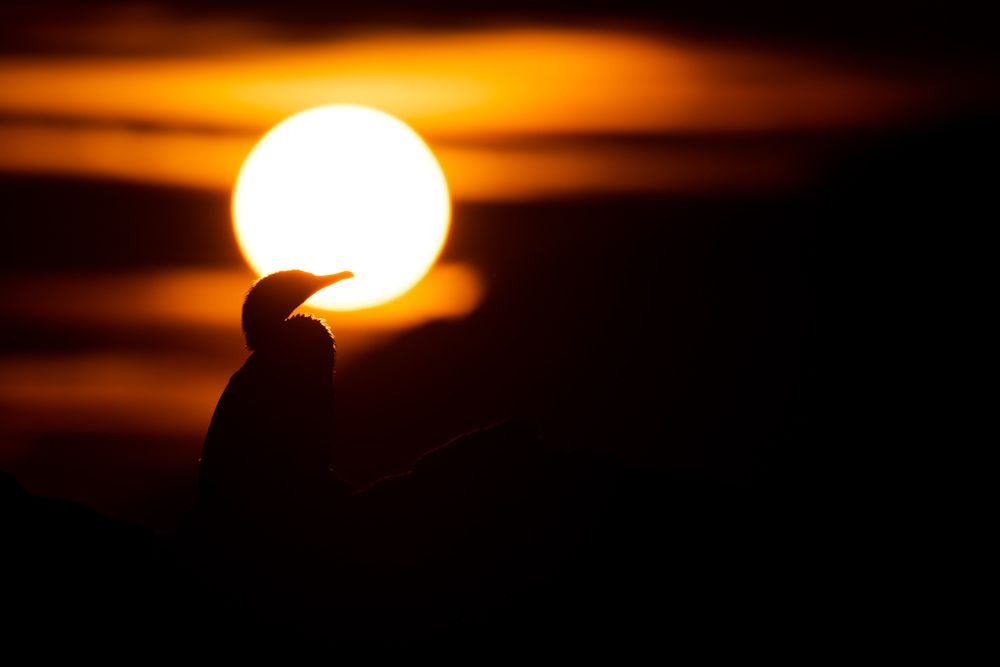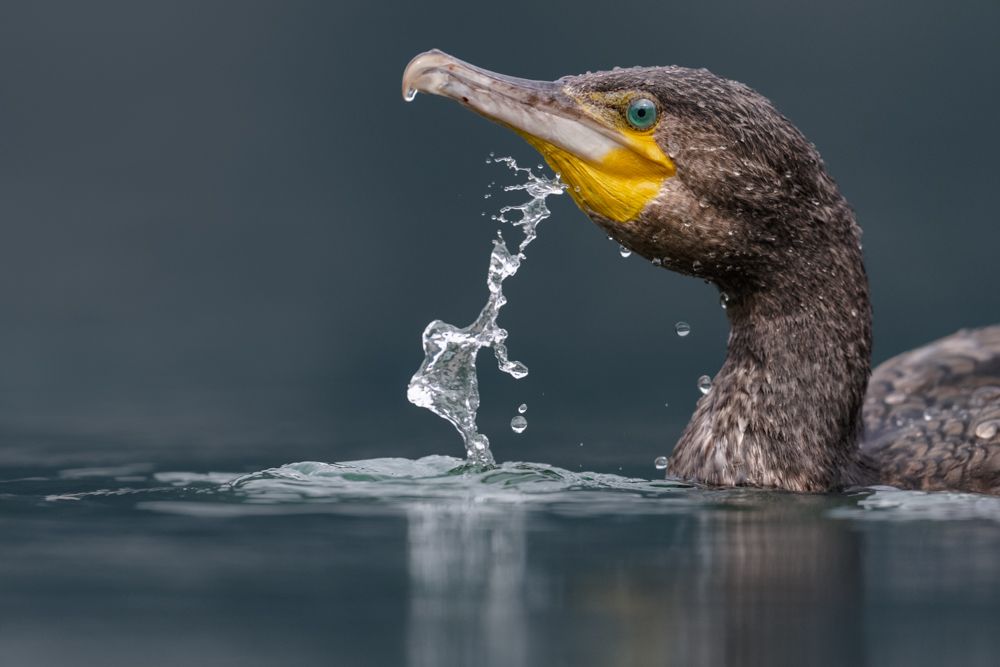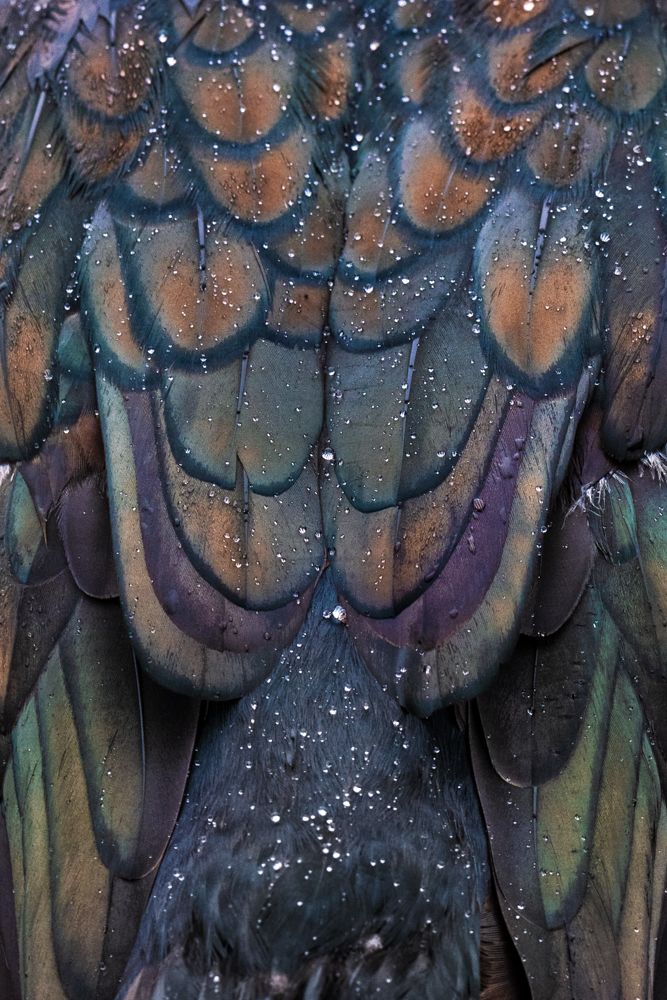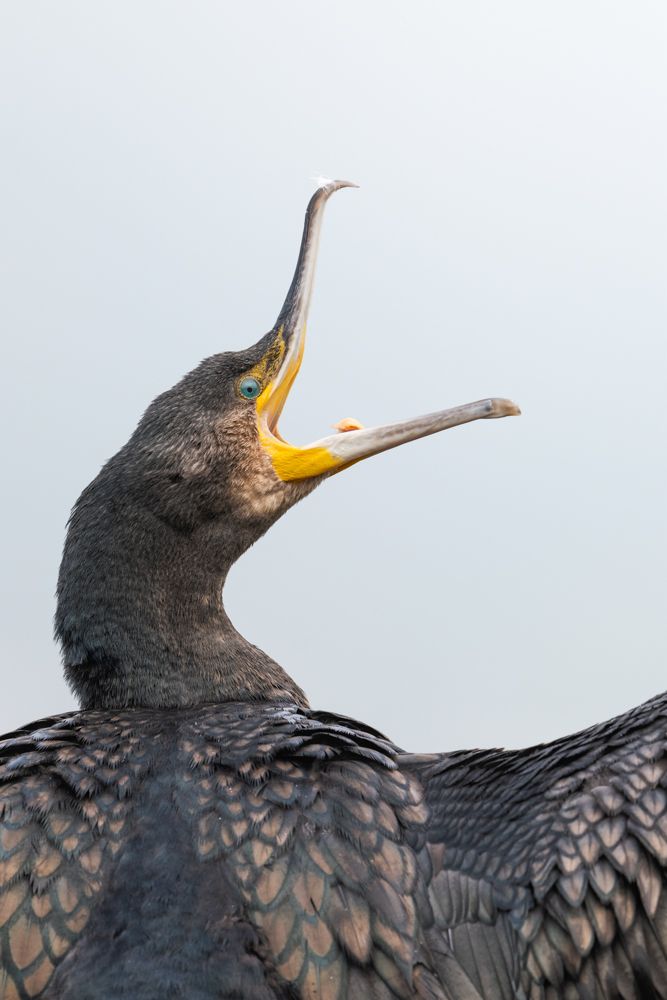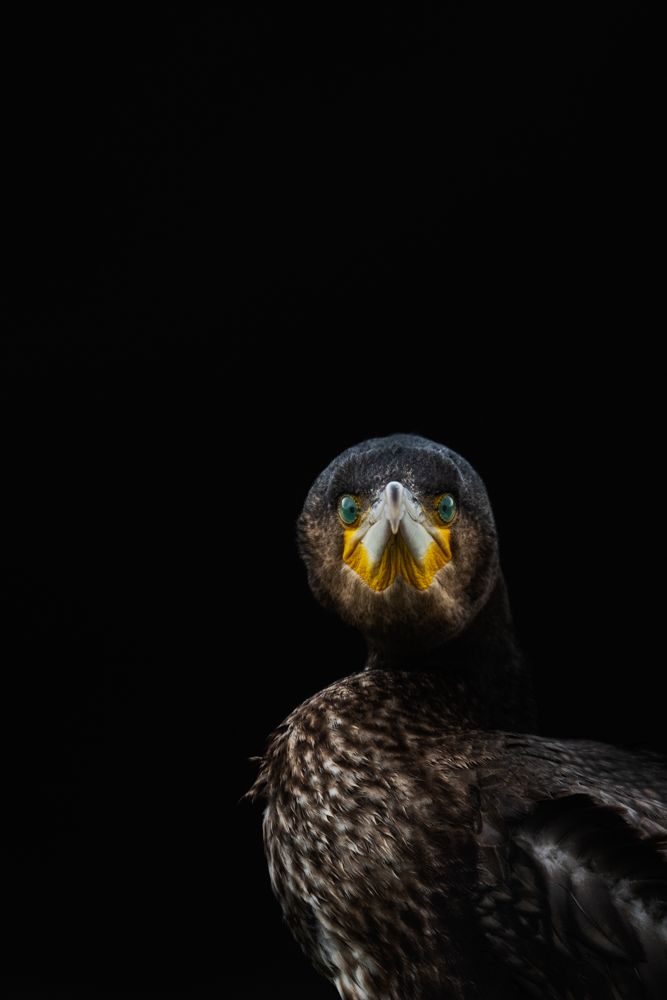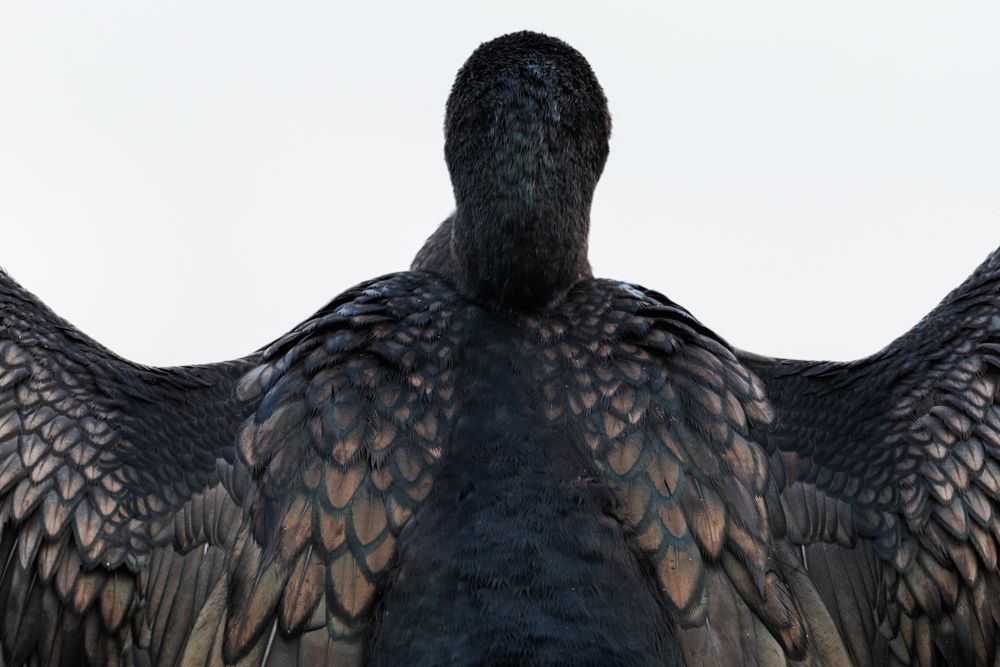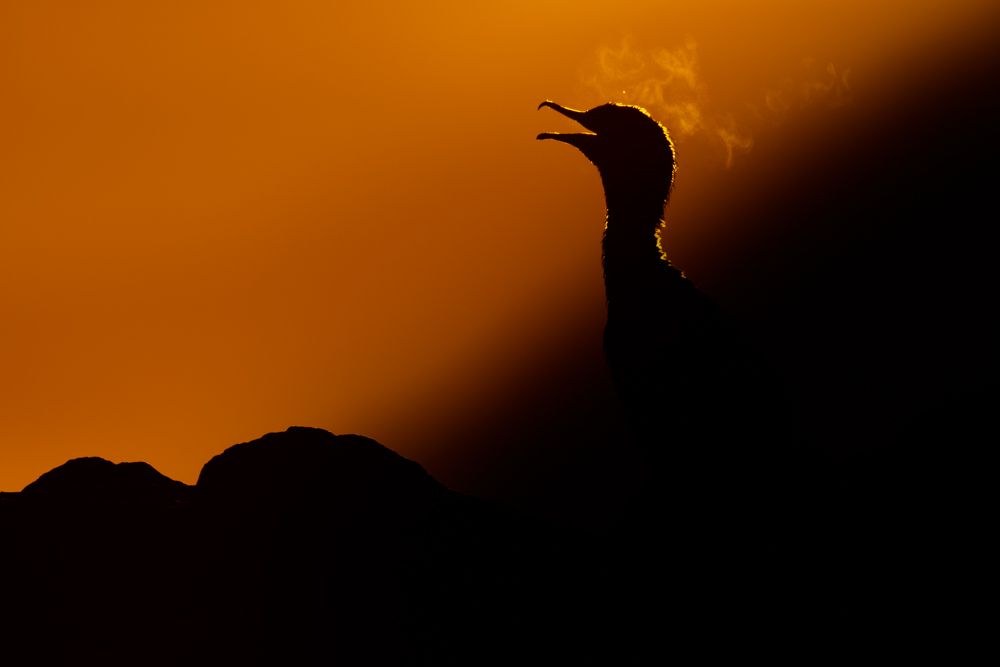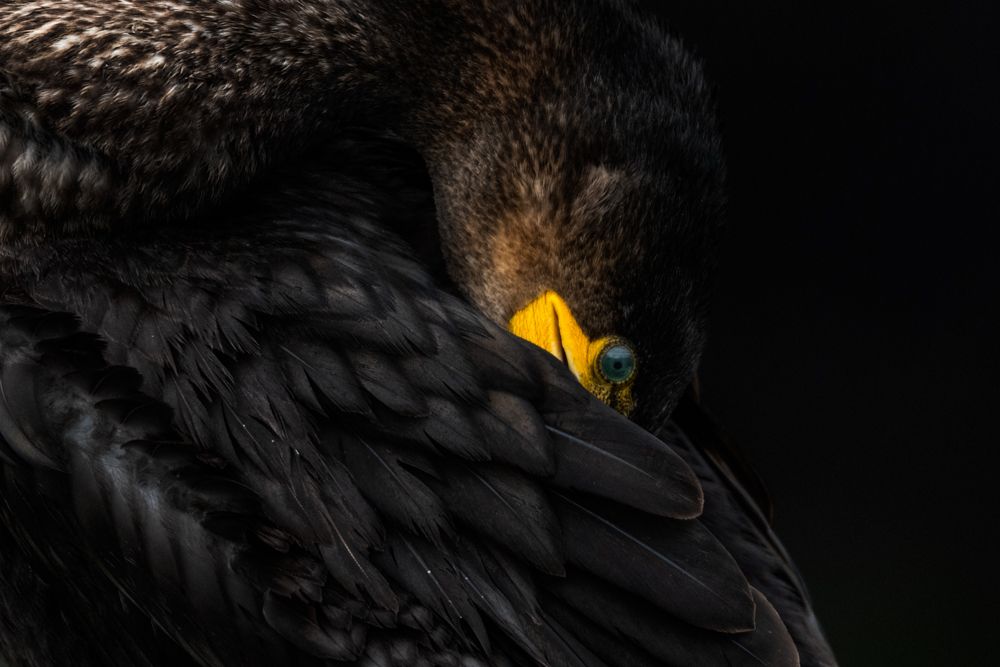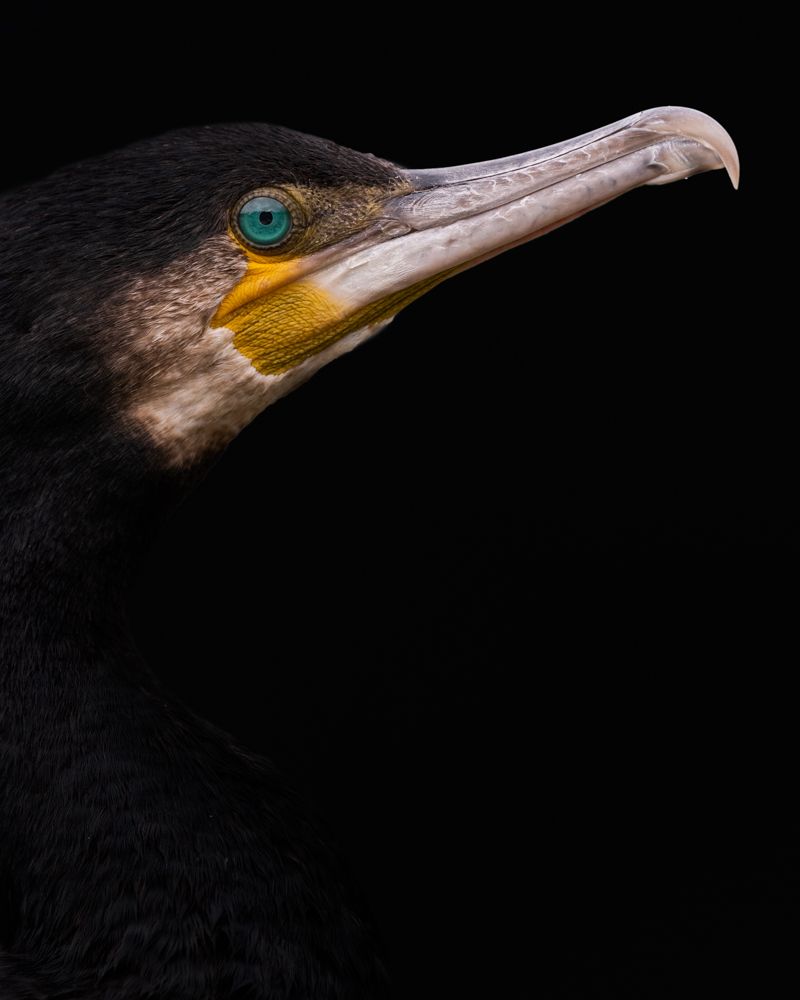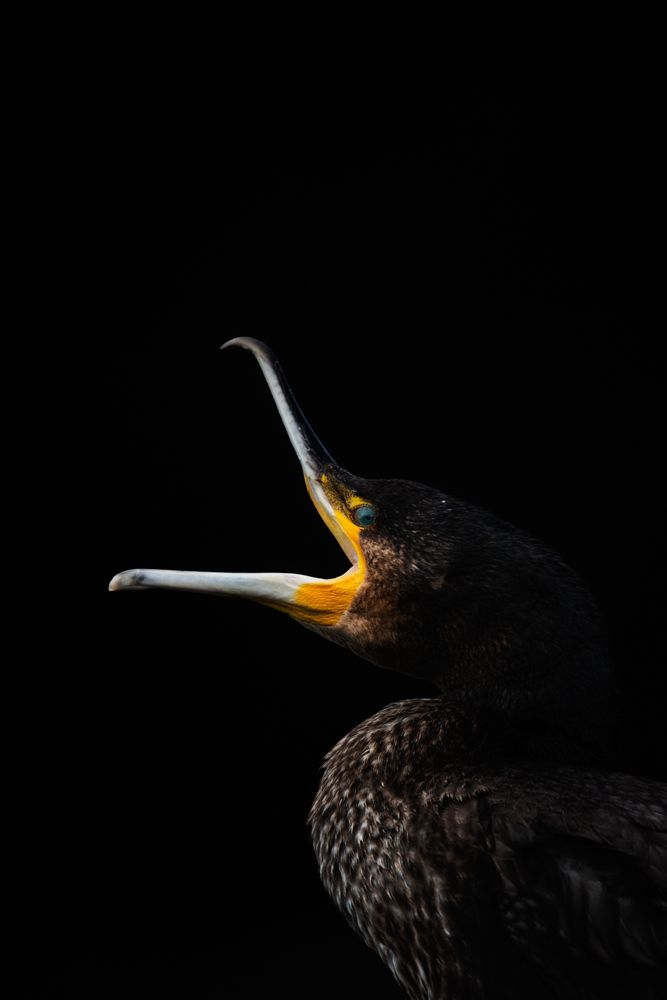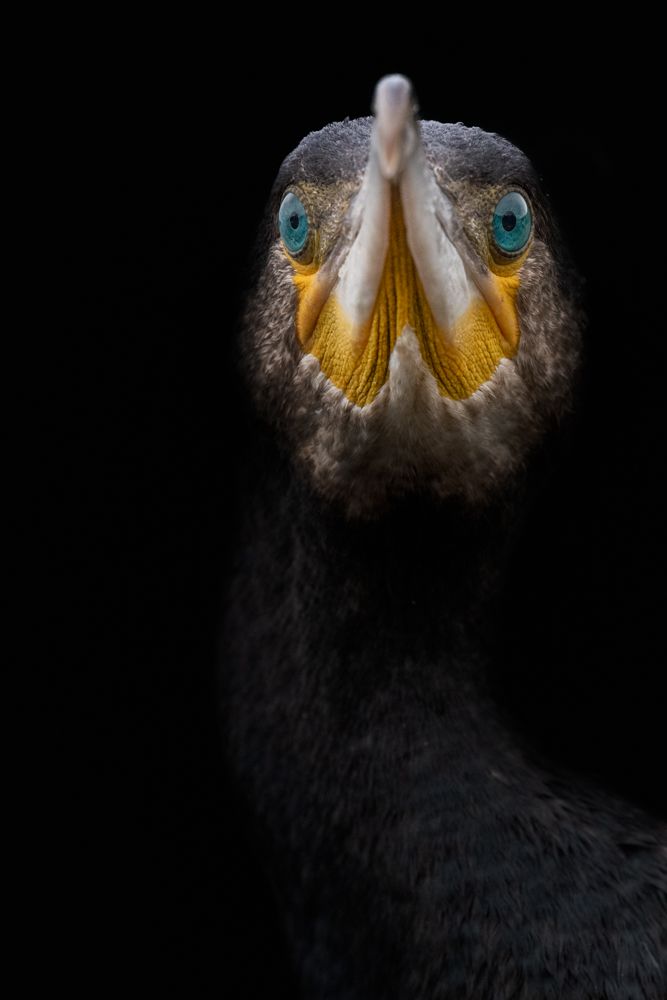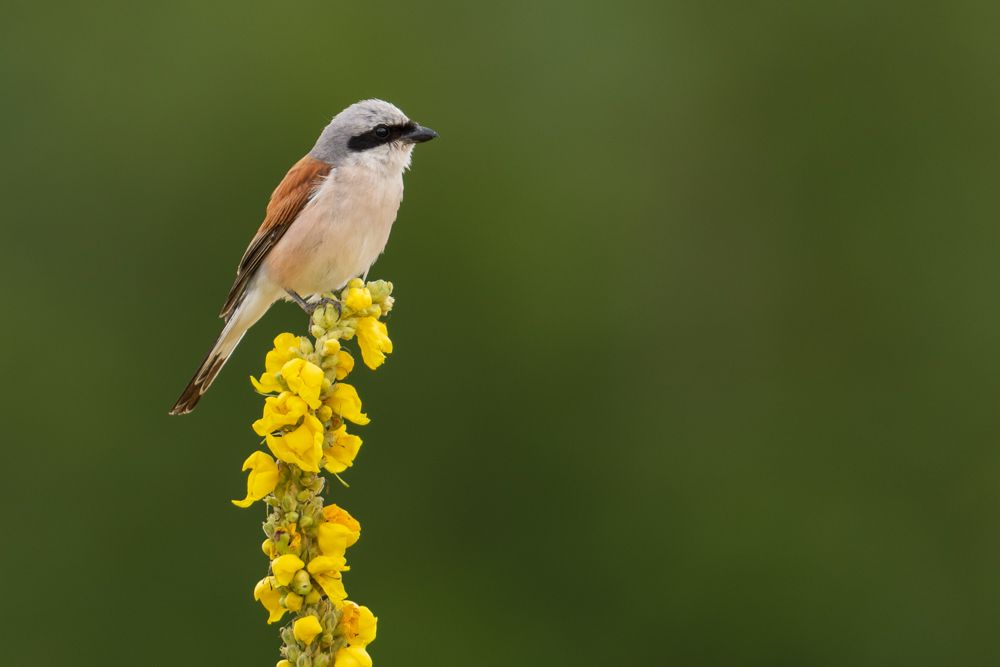Cormorant (Phalacrocorax carbo)
The cormorant bred in Switzerland for the first time only a few years ago. Now the fish-eating bird lives on many of Switzerland's larger lakes.
Profile
Scientific name: Phalacrocorax carbo
Class: Birds
Order: Suliformes
Family: Cormorants
Length: 80-100 cm
Wingspan: 121-149 cm
Weight: 2000-2500 g
Distribution: Europe, East Coast of America, Africa, Asia, Australia
Breeding population CH: 1200-2100 pairs
Habitat: Lakes, larger watercourses
Migration: Short-distance migrant
What does a cormorant look like?
The cormorant is a rather large and narrow bird. Its plumage is almost entirely black. It has a long, grey bill and light blue to turquoise eyes. The plumage of older birds can show a relatively large amount of white feathers on the back of the head. However, the amount of white head feathers varies greatly from bird to bird and also depends on the age of the bird.
The plumage of juvenile birds is generally somewhat lighter and browner. Especially the chest is usually almost white. Also around the base of the beak, the plumage of a young bird can be quite bright.
In flight, Cormorants appear somewhat sluggish and they have to flap their wings relatively frequently. Sailing phases are only very short. In flight, the long neck is also very noticeable. Especially during migration, cormorants are often seen in groups. They usually fly in a loose V-formation and can also fly relatively high above the ground.
Risk of confusion
Cormorants cannot be confused with any other native birds. However, there are two similar birds that can very rarely appear in Switzerland. For example, both the shag and the Pygmy Cormorant can fly into Switzerland. In more than 99% of the cases, however, it will be a cormorant.
The shag looks quite similar to the cormorant. Characteristics to distinguish them are a more pronounced chin and forehead and a slimmer bill.
The pygmy cormorant is significantly smaller than the Cormorant. Also, the Pygmy Cormorant has a much shorter bill, dark eyes, and no yellow at the base of the bill.
Where does the cormorant live?
The cormorant lives mainly around larger water bodies with a good food supply. The cormorant has its nest on a tree at the shore. For food, the fish-eating bird flies in groups to larger water areas. In winter and during migration periods, the cormorant can also be found on smaller bodies of water.
Distribution in Switzerland
The Cormorant has only been a breeding bird in Switzerland for a few years. The cormorant first bred around the new millennium. Between 2002 and 2015, the population increased strongly. In recent years, the population has stabilized at around 3,000 to 4,000 pairs.
In Switzerland, the cormorant can be seen in the Central Plateau and Ticino. During migration periods, cormorants can rarely be seen crossing the Alps.
What does the cormorant eat?
The cormorant eats almost exclusively fish. To hunt, the cormorant dives to depths of up to 16 meters. Mostly, however, the cormorant dives only to depths of a few meters. The cormorant swallows the captured fish in one piece.
Breeding behaviour
The cormorant breeds in usually quite large colonies. There are known colonies with several thousand breeding pairs! The cormorants build their nests on trees near the water. The corrosive excrement causes the trees to die. Thus, the breeding colonies can be recognized by the many dead trees even in winter.
In spring, the female lays between 3 and 4 eggs in the nest made of branches and other plant material. The eggs are then incubated by the parents for a good 4 weeks. After hatching, the young are fed with small fish for about 50 days. Even after the young birds gain the ability to fly, they are still fed by their parents for up to 13 weeks.
Each pair raises one brood per year. The young breed for the first time after about 3 to 4 years.
Migratory behaviour
Cormorants migrate south in winter, depending on the breeding area. In Switzerland, however, most cormorants stay here and do not migrate further south. In addition to the resident birds, individuals from the north come to Switzerland in winter. In winter there are between 5,000 and 6,000 individuals on Swiss waters. At migration times very large groups can develop. I have observed groups of several thousand birds in Switzerland.
Why do cormorants stretch their wings?
Sitting on land, cormorants can often be seen stretching their wings. With their wings stretched out, they often remain on their perch for long periods of time. The reason for this behaviour is still not fully understood. It is assumed, however, that the cormorants would dry their wings in that way.
How to photograph cormorants
Cormorants are quite shy animals. Getting close to them without camouflage is very difficult. So far, I have succeeded only once. You can read more about this encounter in the following article: Cormorant in the harbour area. Otherwise, I was able to photograph the cormorants best with the Floating Hide. In general, I recommend you to photograph cormorants only with camouflage or a lot of patience. The cormorant is not an easy species.
Other species
Resources
The population figures, length, weight and wingspan correspond to the data of the Vogelwarte Sempach
Information on behaviour, distribution etc. is based on my own observations and was supplemented with information from the following sources:
The Birds of Switzerland (2007) Lionel Maumary et al.
Swiss Breeding Bird Atlas 2013-2016
The Cosmos Bird Guide (2017) Lars Svensson et al.


